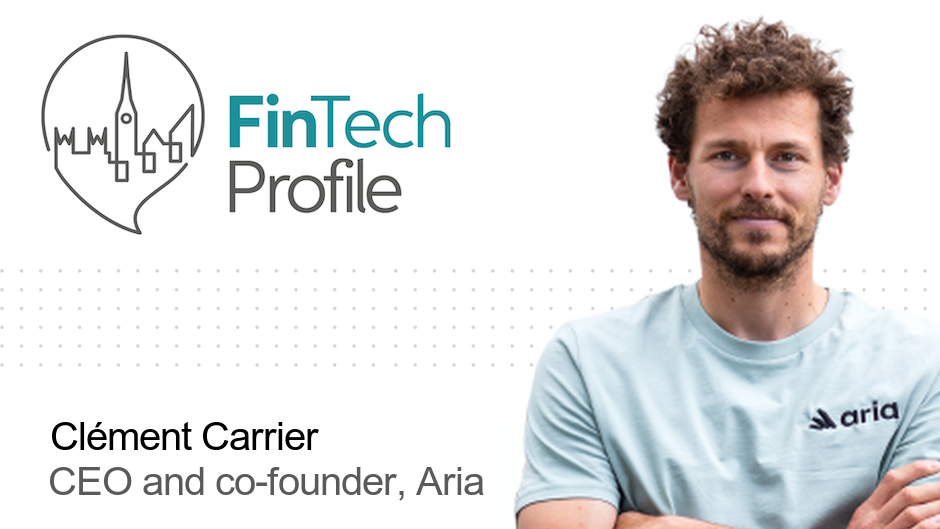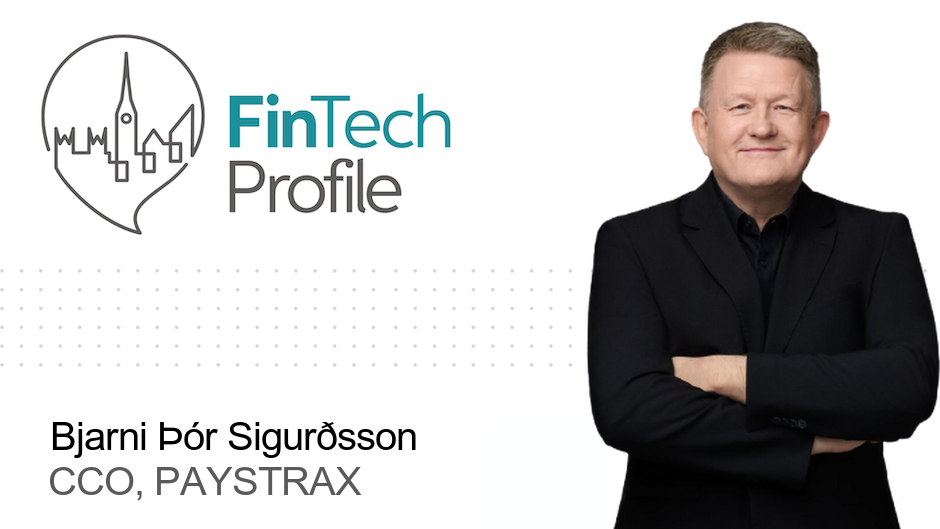Ivo Gueorguiev, Co-Founder, Paynetics

Today we’re meeting Ivo Gueorguiev, Co-Founder of leading pan-European embedded finance provider, Paynetics.
Over to you Ivo:
Who are you and what’s your background?
I am Ivo Gueorguiev, Co-founder of Paynetics, one of the leading European providers of embedded finance. My passion is building businesses, and as a serial entrepreneur, I have built and exited over 20. I started my career in financial services as a merchant banker during the 1990s, investing in banks and non-financial institutions across Europe.
Over my professional life, I have worked predominantly in the financial services sector, building and selling four banks over the last three decades, and involved with a lot of other companies more broadly in the industry.
After navigating the financial crises, I was looking to retire in 2012. However, I was tempted to go deeper into the payment space, where the advances of e-commerce and the iPhone changed the game.
Since 2017, even as I get older, I have not relaxed due to the fast-moving and exciting fintech sector. Over the past seven years, I co-founded three companies in the space, pioneering the softPOS – bringing card acceptance to millions of merchants globally (we exited this one to the largest hardware POS player in the world) – and continuing to build Paynetics into the leading pan-European payment gateway.
What is your job title and what are your general responsibilities?
I am an Executive Director at both Paynetics and our FCA-licensed subsidiary in the UK. I focus on strategy, risk and compliance and drive our M&A initiatives.
Can you give us an overview of your business?
Our mission is to empower our clients to design, build and operate financial products that address key pain points in the financial market and have a measurable social impact.
As a B2B player, we offer fully embeddable payment products predominantly to non-financial companies. We are living through a foundational shift in how financial services are consumed. As brand loyalty is shifting steadily to non-financial players, consumers are placing increasing importance on a convenient and frictionless payment journey.

The market is demanding integrated solutions requiring a combination of modern, cloud-native technologies and compliant, regulated capabilities. That is where we help our customers create and deploy embedded finance programs internationally.
We command one of the widest product ranges in the industry, including card issuing, banking-as-a-service, card acquiring, open banking, accounts and transfers.
Paynetics is a dual-regulated e-money institution with EMI licences in the European Union and the UK, so our team are experts in supporting businesses with navigating regulation and compliance to integrate payment solutions in their offering seamlessly. We ensure products and services comply with local legislation – sophisticated anti-money laundering, fraud monitoring, and compliance are part of the offer.
Tell us how you are funded?
We deviated from the traditional model and predominantly went down the self-funding route – a journey of trial, error and learning. Even though we have a small VC and bank as sole shareholders, the two founding partners have the majority of the shares.
What’s the origin story? Why did you start the company? To solve what problems?
The payments market back in 2016 lacked coherence and scalability. We saw movements being made around digitalisation and mobile payments. There was the opportunity to democratise products and services for businesses by housing them all in one place. It was more of a gut feeling that led us to this intersection, and we felt strongly about making moving and managing money simple, given how complex it was and still is.
We started with card issuing and acquiring before adding bank accounts with access to SEPA and Faster Payments, open banking and digital mobile apps. As we expanded our product offering and the sophistication of our software, so did our partners. We were able to develop our new comprehensive suite of financial products and services as a result.
Now we spend more time on the impact we have. Our cutting-edge payment technologies provide businesses with tools tailored to their needs and business impact is truly at the heart of everything we do. Innovation on its own is not enough. We actively look at the impact we have on society. We are revolutionising how financial services are delivered and consumed with a specific focus on financial inclusion, supporting SMEs, democratising ESG and driving impact on the ground.
Who are your target customers? What’s your revenue model?
As an embedded finance provider, Paynetics does not directly target end customers. We empower Payment Service Providers, FinTechs, program managers, corporates, banks and public sector businesses to introduce payment services that integrate within their existing products. We have powered some of the most successful companies in Europe, like Weavr.io, Trading 212, and Payhawk.
Our business model is based on partnerships. Together, we design, build, and operate financial products for all our partners to deliver to their clients. For example, we launched a multiple award-winning digital banking app and launched the first ‘digital first’ card to the Bulgarian market, replacing millions of plastic cards and transforming how customers pay.
We have over 70 B2B partnerships across 20 countries in total. One of our most recent announcements was our acquisition of @Novus earlier this year. They are a B-Corp-certified digital bank in the UK, enabling users to monitor their carbon footprint and earn cashback for sustainable purchase choices through its app. Another is our partnership with money management platform Woli Fintech to improve financial literacy among young people with payment accounts and Visa cards.
Our revenue model is very simple and aligned with the interests of our partners. The majority of revenues are transaction-based, so we make money when our partners make money.
If you had a magic wand, what one thing would you change in the banking and/or FinTech sector?
I would magic an active regulatory environment, with proper enforcement to create a level playing field for competitors and a sound basis for investment.
As a leading regulated fintech in the European market, we would welcome this change and would caution customers to be wary of fintech businesses that are not a part of this.
What is your message for the larger players in the Financial Services marketplace?
There is a very interesting window of opportunity for the larger players, who traditionally have been slow on innovation. Investor appetite is still low, and a challenging economic climate means only a handful of fintechs will survive on their own.
Over the next 12 months, the number of fintech players will shrink. For the larger players struggling, with innovation, consolidating with other fintechs is the most viable option. It is also a golden opportunity for cash-rich companies to bolster their revenue streams rather than start from scratch.
Where do you get your Financial Services/FinTech industry news from?
I get my industry news from national media such as the Financial Times, Forbes and Bloomberg and trade titles such as Finextra.
Can you list 3 people you rate from the FinTech and/or Financial Services sector that we should be following on LinkedIn, and why?
- Jamie Dimon, as the sensible voice in financial services. J.P. Morgan is one of very few large banks that are managing to be successful in innovation.
- Peter H. Diamandis offers great insights on building businesses.
- In the FinTech space, I like Marcel van Oost‘s posts, which present numbers and trends nicely woven in context.
What FinTech services (and/or apps) do you personally use?
I use Starling Bank for my everyday banking. They have created a great product.
For investments, I use Trading 212, which boasts an amazing user interface and overall user experience.
What’s the best new FinTech product or service you’ve seen recently?
- Zoe Health offers a great digital health experience by using AI and machine learning to analyse your unique gut, blood fat, and blood sugar responses to give personalised nutrition advice.
- Sapi addresses the working capital pains of SME merchants by offering liquidity-as-a-service and payment-linked credit solutions to enhance payment flow and benefit merchants.
Finally, let’s talk predictions. What trends do you think are going to define the next few years in the FinTech sector?
One area, of course, is the way AI will impact payments. The fusion of mobile and AI will redefine the financial services industry. Machine learning algorithms harnessed by financial institutions are starting to leverage vast data for insightful analysis, ushering in a paradigm shift in customer interactions. This fusion promises unparalleled efficiency, security, and personalised experiences. AI offers features like tailored advice and predictive analytics that align seamlessly with the evolving expectations of today’s tech-savvy consumers. As we look ahead, the coming year will see further strides in this arena, focusing on enhancing efficiency and minimising conventional practices.
In the coming years, we expect mobile payment providers to be gearing up to level up their offerings with value-added services such as money management, lending, savings, and insurance. Neobanks and fintechs will lead the charge with features that streamline banking tasks, providing a more convenient and user-friendly experience than traditional banks.
However, the real spark of hope lies in the public sector. By embracing embedded finance, public services can extend the digital payments revolution to those who need it most. Imagine social cards that handle benefits distribution and budgeting or refugee support programs with built-in mobile payments. Embedded finance means financial services woven into government programs, simplifying everything from tax payments to benefit management for the most vulnerable.
Thank you so much for participating Ivo.
You can find Ivo on LinkedIn here: Ivo Gueorguiev and his company, Paynetics at https://www.paynetics.digital/.




